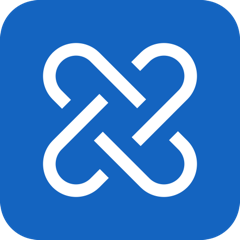 At the beginning of 2011 Pleio was officially launched. The platform started out small, as some sort of a social media side project owned by a select group of Dutch public servants. Over the last eight years, however, the ICT tool has experienced a strong expansion and professionalization. By the start of 2019 the platform had over 400.000 users, spread over more than 100 public organizations. The different Pleio applications address both policy design and internal collaboration processes.
At the beginning of 2011 Pleio was officially launched. The platform started out small, as some sort of a social media side project owned by a select group of Dutch public servants. Over the last eight years, however, the ICT tool has experienced a strong expansion and professionalization. By the start of 2019 the platform had over 400.000 users, spread over more than 100 public organizations. The different Pleio applications address both policy design and internal collaboration processes.
Aims and goals
The pioneers´ idea of Pleio was to contribute to a process of co-creation in a network society. The key aims and values of Pleio were summarized in the ten tenets of the Pleio Manifesto. In general terms Pleio had three main goals. Firstly, transcending institutional boundaries and connecting people inside and outside government with a strong focus on knowledge sharing. Secondly, saving public money by developing and delivering common ICT building blocks to the entire public sector and, by doing so, avoiding unnecessary and expensive duplication. Thirdly, securing public data by facilitating information and documentation sharing in Dutch hands.
Key ICT features
The Pleio platform is open source and available to a wide audience in the public sector. The most popular applications of Pleio are collaboration platforms, communication websites, community forum websites and social intranet. The software behind Pleio is Elgg, an open source cross-purpose social networking platform, but Pleio is currently developing a new Python backend. Pleio is partly hosted by the ODC, the Data Centre of the Dutch Government and partly by CloudVPS, a virtual hosting specialist in Amsterdam.
Implications and (un)intended effects
1. Legitimacy
Different Pleio applications and especially the community forum websites for tax professionals and teachers contribute to input and output legitimacy provide by “bringing inside what lives outside”. They offer new ways of gathering feedback as well as the opinion, concerns and expectations of different external stakeholders (measuring the temperature). This information can then be integrated into the policy cycle. Another important role of the different Pleio platforms is facilitating formal and informal interaction and knowledge sharing with external partners such as other public administrations, the private sector and citizens. Finally, the Pleio applications also provide an additional channel for communicating new policy measures to the public, thereby hopefully contributing to a higher legitimacy.
2. Efficiency and Effectiveness
The effects on efficiency and effectiveness are significant in terms of internal and external collaboration. As to the internal collaboration effects Pleio has facilitated a new meeting culture in the Netherlands Enterprise Agency (reduction of time) and significant savings at the Tax department (cost reduction), since the workload of the call centre decreased. Other effects were the need for community managers and the new role of editorial teams.
3. Politics-Administration Dichotomy
Pleio was initiated from the bottom up by a group of public servants from the Tax and Customs Administration and the Ministry of Economic Affairs. Pleio defined itself as being “of, by and for the community” and was never officially integrated as a standard government community tool. It has always been considered a bit like an outsider and tried to stay out of politics and maintain its independence. Consequently, the effects on the politics-administration dichotomy are limited. As to the effects on the internal organization the different public administrations that use Pleio experienced a shift in culture, especially in the way of thinking and the way of communicating. The Pleio applications broke the normal routines, the traditional way of doing things. Furthermore, values such as interconnection and openness became more prominent.
To read more about the case study, see D4.3 – Comparative Case Studies report.
Further materials
The following sources (mostly in Dutch) provide a brief overview of Pleio and its applications:
- The presentation of Pleio on the general website (in Dutch and English). Available here
- The online help community for Pleio applications. Available here
- The early mission and vision of Pleio. Available here
- AN overview of the Pleio statistics. Available here
About the Authors
Pieter Raymaekers, KU Leuven
Steven Van de Walle, KU Leuven
